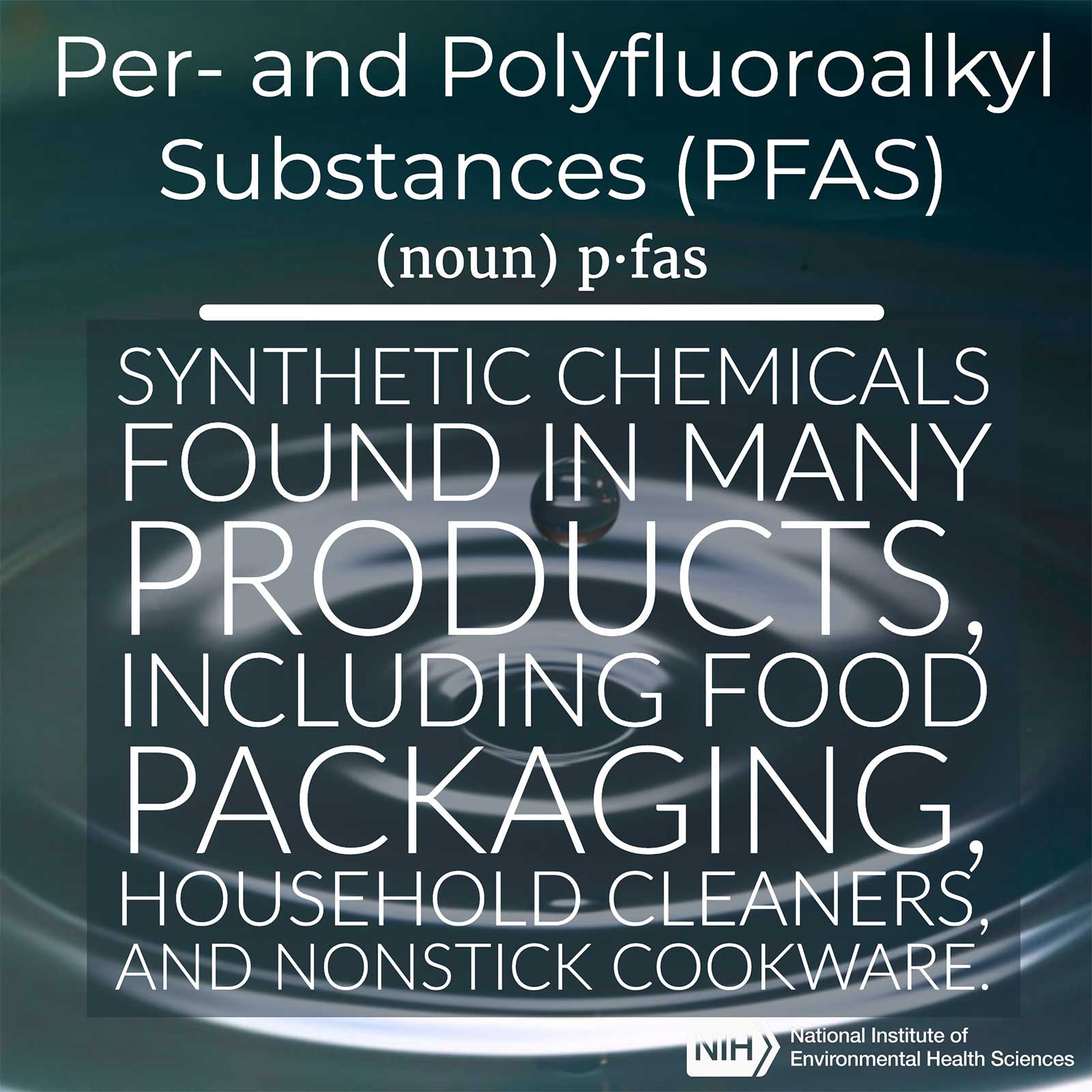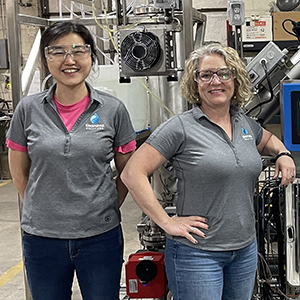 Weis helped to organize the Federal Information Exchange, which will highlight the work of several scientists each month until February 2021. (Photo courtesy of Steve McCaw)
Weis helped to organize the Federal Information Exchange, which will highlight the work of several scientists each month until February 2021. (Photo courtesy of Steve McCaw)Scientists from NIEHS and the U.S. Environmental Protection Agency (EPA) presented their latest research on per- and polyfluoroalkyl substances, or PFAS, in the second in a series of virtual Federal Information Exchanges Aug. 28. The exchanges are organized and supported through efforts of the Interagency Technical Working Group on PFAS. Discussions involve topics such as exposure, risk assessment, risk communication, and mitigation.
“The purpose of these workshops is to share important information about PFAS among federal and state agencies and to involve federally funded university researchers in the conversations,” said Chris Weis, Ph.D., NIEHS toxicology liaison and session moderator. “We hope these discussions will open opportunities for collaboration and encourage cross-communication between scientists to understand how we may address the problem of PFAS.”
PFAS are man-made substances used in many products, such as firefighting foams, food packaging, and water-resistant fabrics for clothing and furniture. Researchers have linked exposure to the substances with reduced fetal growth, increased cholesterol levels, and increased risk of thyroid disease, among other health effects.
Placenta is understudied
Understanding how early-life exposure to environmental contaminants can set the stage for future health issues is a major interest in the lab of Sue Fenton, Ph.D., head of the Reproductive Endocrinology Group at NIEHS. Her mentee Bevin Blake, Ph.D., discussed work she completed in Fenton’s lab as a graduate student. Blake spoke about her research involving two PFAS called perfluorooctanoic acid (PFOA) and GenX.
 Blake recently joined the National Toxicology Program Interagency Center for the Evaluation of Alternative Toxicological Methods. (Photo courtesy of Steve McCaw)
Blake recently joined the National Toxicology Program Interagency Center for the Evaluation of Alternative Toxicological Methods. (Photo courtesy of Steve McCaw)“We know that PFOA has been studied as a reproductive toxicant in mice, and we know that GenX is a favored replacement for PFOA,” she said. “Does GenX exposure similarly affect reproduction or development in mice?”
Blake’s research in a rodent model examined developmental outcomes after exposure to PFOA or GenX. She found that exposure to either substance increased placental weight.
“Heavier usually means an adverse response in the animals,” said Blake. “That finding tends to suggest there is something interesting going on, but we needed to zoom in to appreciate what that might be.”
So, the team, which also included Susan Elmore, D.V.M., a veterinary medical officer and staff scientist at NIEHS, looked at the microanatomy of the placenta’s inner compartment, where nutrients pass from mother to developing child. This area is known as the placental labyrinth.
High exposure to PFOA resulted in tightly packed placental labyrinth cells, which suggested the cells might not be able perform their normal functions. At both high and lower levels of GenX exposure, the labyrinth cells had atrophied, or wasted away, which may mean that even low concentrations of the substance can harm development in rodents.
 Much work remains to better understand the more than 8,000 different PFAS that exist, as some have been more widely used and studied than others.
Much work remains to better understand the more than 8,000 different PFAS that exist, as some have been more widely used and studied than others.The diversity of PFAS
According to the EPA, there are more than 8,000 different PFAS. Some have been more widely studied than others.
“EPA’s plan is to use computational toxicology to address these information gaps that exist for the vast majority of PFAS,” said Grace Patlewicz, Ph.D., a scientist at the EPA National Center for Computational Toxicology and Exposure.
Patlewicz and colleagues assembled a library of 430 PFAS to capture the diversity of the chemical class. Next, they selected a representative set of 150 substances for non-animal testing. The goal is to screen for potential effects on brain development and the immune system, for example, and help refine specific PFAS for higher level testing.
“Results so far demonstrate wide variation in biological activity for different PFAS,” said Patlewicz.
She noted that the 150 representative substances were separated into different structural classifications based on chemical features. The scientists developed a set of 34 categories that encompass more than 90% of all PFAS.
(Sheena Scruggs, Ph.D., is a digital outreach coordinator in the NIEHS Office of Communications and Public Liaison.)










